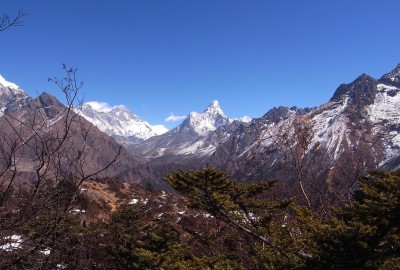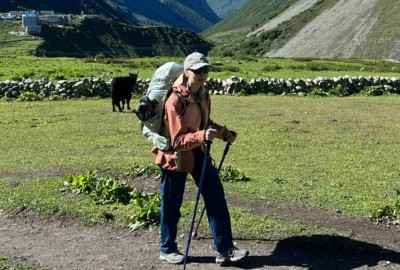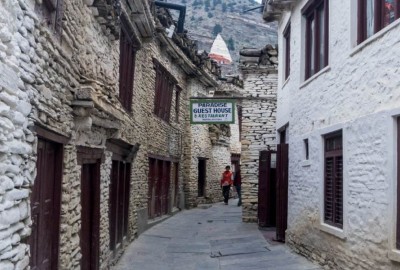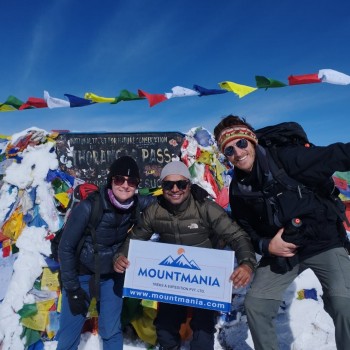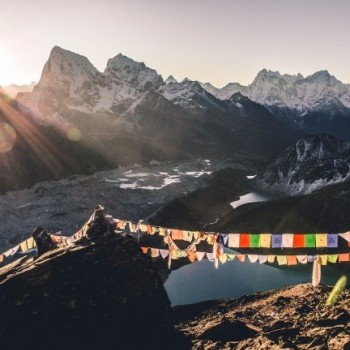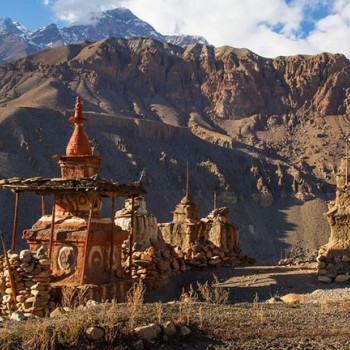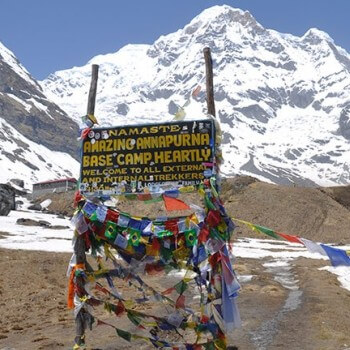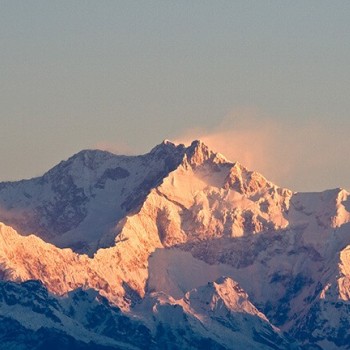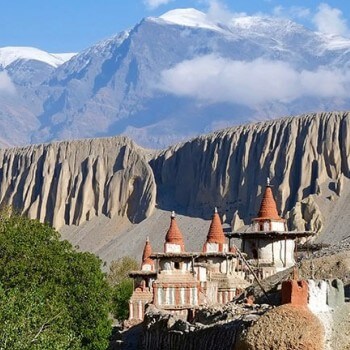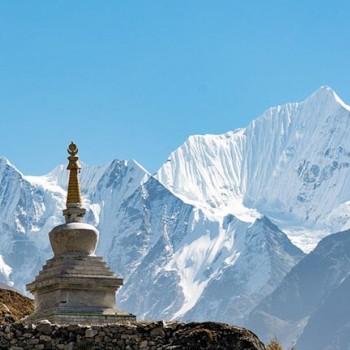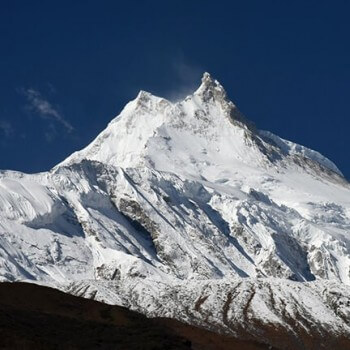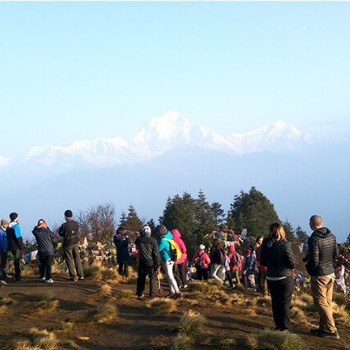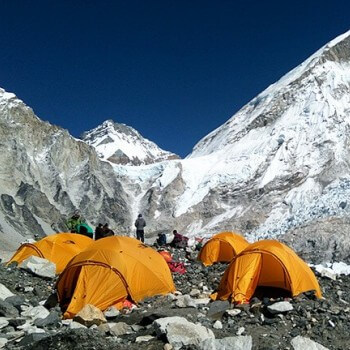Would you be interested in going on a trekking experience in Nepal? For your selection, we have put up a list of the top 10 treks in Nepal that includes the most well-liked trekking routes.

Tucked away amid the Nepalese Himalayas, the Manaslu Circuit Trek is a living example of both human tenacity and the majesty of nature. Although the Annapurna Circuit, its more well-known neighbor, frequently draws more attention, this journey gives explorers a less-traveled route and the opportunity to experience unspoiled scenery and cultural treasures. Trekking over Mount Manaslu, the eighth tallest peak in the world, this journey promises an amazing experience for those who dare to take it on.
In contrast to its busy counterpart, the Manaslu Circuit Trek provides a calmer, less congested tour of the Himalayas. There are fewer hikers on the trail, giving adventurers a unique chance to get up close and personal with nature and appreciate the peace and pristine beauty of the terrain.
The Manaslu Circuit Trek's varied and magnificent environment is among its most alluring aspects. With each step of this journey, a breathtaking new view is revealed, from verdant green woods to desolate glacier valleys. Trekkers are rewarded with expansive views of snow-capped peaks, glistening mountain streams, and charming villages tucked away among terraced fields—a photographer's dream come true every step of the way.
Beyond its scenic splendor, the Manaslu Circuit Trek offers an exploration of the local cultural fabric. Hikers are greeted with friendly hospitality and extensive cultural interactions as they pass through isolated mountain villages home to indigenous groups like the Gurungs and the Tibetans. Every stop along the route provides an insight into the distinctive way of life in the Himalayas, from rustic mountain lodges to historic monasteries festooned with prayer flags.
Though it might not be as well-known as some of its peers, the Manaslu Circuit Trek has its advantages and disadvantages. Hikers need to be ready for conditions that can vary from extreme weather to high altitudes and rough terrain. Still, conquering these challenges only heightens the sense of achievement and breathtaking moments that await at each pass and peak.
Key Reminders:
- Rules and Permits: Before starting the hike, make sure you have all the required permits, including the Manaslu Restricted Area Permit. Throughout your travels, abide by local laws and customs.
- Altitude Acclimatization: Provide yourself enough time to adjust to the high altitude by scheduling rest days and drinking enough of water.
- Pack sensibly: Take only what you need for the walk, bringing along strong hiking boots, layers of warm clothes, and a high-quality sleeping bag, among other necessities.
- Remain Nourished and Hydrated: To maintain your energy levels during the walk, stay hydrated and eat a balanced meal.
- Responsible Trekking: To reduce your environmental effects, adhere to the Leave No Trace philosophy. Additionally, support your local community by lodging at lodges run by locals and making purchases from them.
In summary, the Manaslu Circuit Trek entices travelers with its wild beauty, depth of culture, and spirit of discovery. This adventure provides an unmatched opportunity to connect with nature, oneself, and the vivid tapestry of life in the mountains for those looking for an off-the-beaten-path trekking experience in the Himalayas.
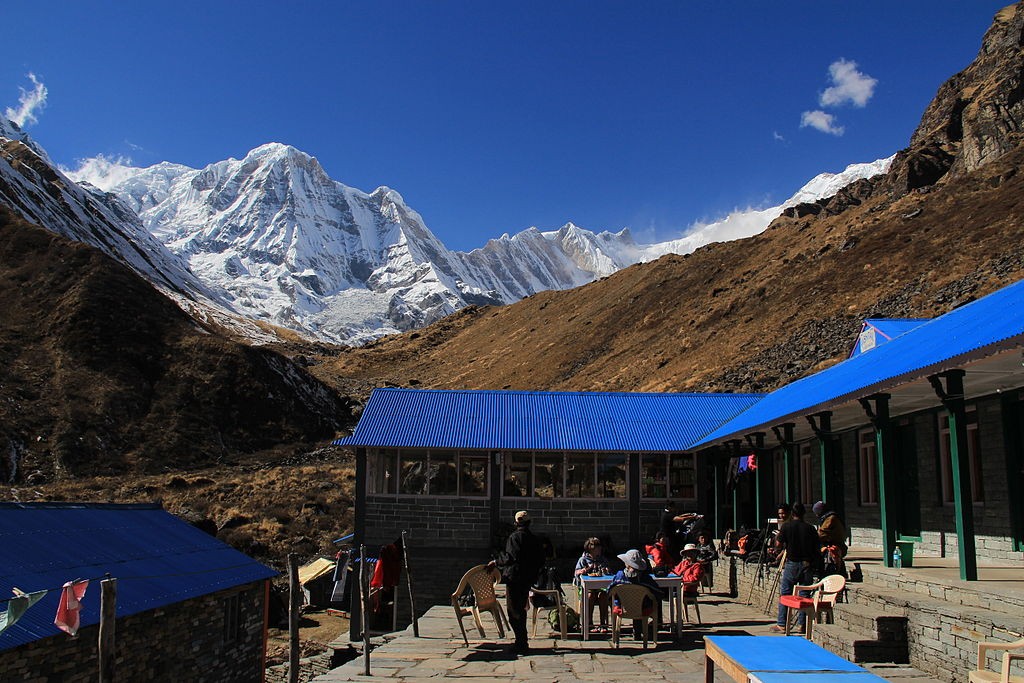
The Annapurna Base Camp Trek is a 115-kilometer journey that can be finished in 7 to 12 days, depending on the route and speed that are selected. The adventure starts in the energetic city of Pokhara, where hikers get ready for the journey by relaxing in the serene atmosphere of Phewa Lake before beginning their ascent.
This trek's constantly shifting landscape is one of its most alluring aspects. Views of the traditional mountain way of life can be had as the trail meanders through charming towns, terraced fields, and thick rhododendron forests. The scenery changes as you go up, from verdant lands to untamed areas dominated by snow-capped peaks, such as the famous Machapuchare and Annapurna massif.
Arriving at Annapurna Base Camp, which is 4,130 meters (13,550 feet) above sea level, is unquestionably the high point of the climb. Trekkers are rewarded with an amazing view of snow-capped peaks sparkling in the sunlight as they stand amidst towering giants, including the 8,091-meter Annapurna I. Every step of the hike is rewarded because of the unmatched sensation of accomplishment and amazement at this magnificent mountain amphitheater.
Teahouses and guesthouses, which offer basic amenities and an opportunity to meet locals, greet trekkers with warm hospitality along the journey. The trek gains a cultural component when one immerses oneself in the customs, food, and way of life of the native Gurung and Magar populations. Even though the Annapurna Base Camp Trek offers encounters with unmatched natural beauty and culture, it's important to be ready for the hardships it presents.
Key Reminders:
- Physical Fitness: The hike requires a good degree of physical fitness due to its severe ascents and descents. Trekking can be considerably improved by cardiovascular endurance training and prior trekking experience.
- Acclimatization to Altitude: To avoid illnesses linked to altitude, adequate acclimatization is essential. To enable the body to acclimate to higher elevations, gradual ascent, and appropriate hydration are crucial.
- Weather: The Himalayan region experiences erratic weather, ranging from bright days to unexpected snowstorms. It's crucial to bring clothes and equipment that will work for any situation.
- Regulations & Permits: Before starting a journey, hikers must obtain the appropriate permits, such as the Trekkers' Information Management System (TIMS) card and the Annapurna Conservation Area Permit (ACAP). The area's natural beauty is preserved to some extent when conservation laws are followed.
The Annapurna Base Camp Trek, in summary, offers a life-changing adventure across some of the most breathtaking scenery on earth. Every trekker who is fortunate enough to witness its majesty will be forever changed by the experience; from the verdant valleys to the towering peaks, every moment is one of amazement and wonder.
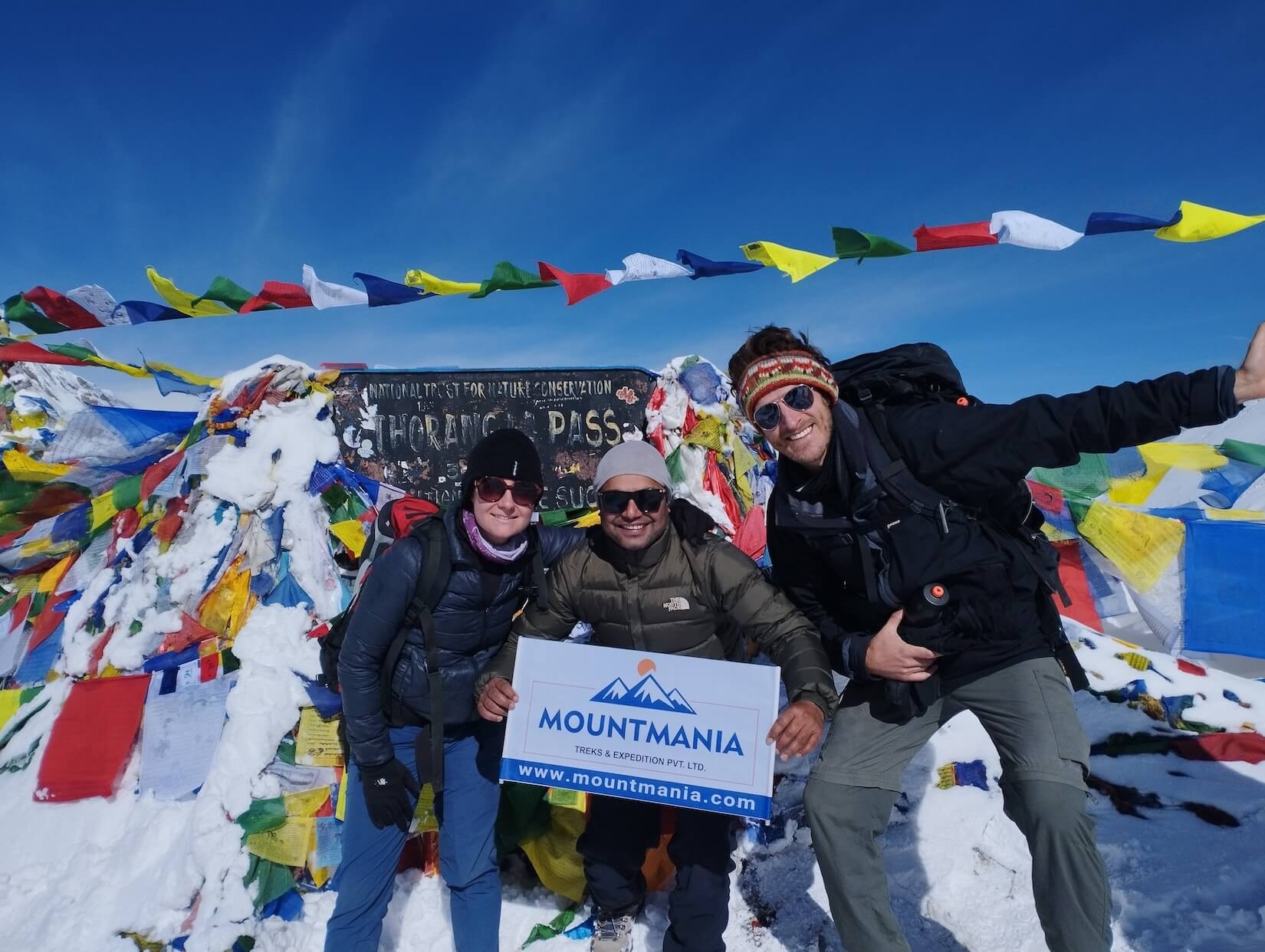
Trekkers who want to experience a traditional Himalayan adventure can join the Annapurna Circuit Trek, which circles the Annapurna Massif, one of the world's most striking mountain ranges. The trip usually takes 15 to 20 days to finish, giving you plenty of time to adjust to the altitude and take in the breathtaking scenery of the area. It spans roughly 160-230 kilometers, depending on the exact routes you choose.
The amazing diversity of the Annapurna Circuit Trek is one of its most enticing features. As hikers ascend and descend through several ecological zones, the environment changes dramatically, transitioning from lush, subtropical woods to arid, high-altitude deserts. Highlights of the route include passing through the 5,416-meter-high Thorong La Pass, enchanting villages home to various ethnic groups like the Gurung, Thakali, and Manangi people, and breath-taking views of snow-capped peaks like Annapurna, Dhaulagiri, and Machhapuchhre.
The Annapurna Circuit Trek provides a chance for cultural immersion in addition to its breathtaking natural beauty. Trekkers get the opportunity to engage with local people, see historic monasteries and temples, and learn about the rich traditions and customs of the Nepalese people all along the route. Every experience enriches and gives significance to the trekking journey, whether it's partaking in a traditional dance performance or savoring a substantial dinner of dal bhat, the national cuisine of Nepal, in a homely teahouse.
Trekkers with different degrees of experience can still complete the Annapurna Circuit Trek, but a safe and pleasurable trip requires preparation. This entails getting the appropriate licenses (such as the Trekkers' Information Management System card and the Annapurna Conservation Area permit), buying high-quality equipment, and engaging in physical training to develop the endurance and stamina required for the demanding terrain. Furthermore, it is imperative to be aware of the possibility of altitude sickness and to take the necessary precautions, such as gradually acclimatizing and drinking enough water.
There are several reasons to choose from when doing the Annapurna Circuit Trek, each with its special benefits. In general, reliable weather and breathtaking scenery are experienced throughout the spring (March to May) and fall (September to November) trekking seasons. But while the winter months (December to February) give clear, crisp days perfect for shooting, the monsoon season (June to August) delivers lush flora and fewer tourists.
This legendary trek offers an experience that will stay in the hearts and minds of travelers for years to come, whether they are traversing difficult mountain passes, developing relationships with local communities, or just taking in the majesty of nature. Prepare for an unforgettable adventure through the breathtaking scenery of the Annapurna Circuit by putting on your boots, packing your baggage, and setting out.
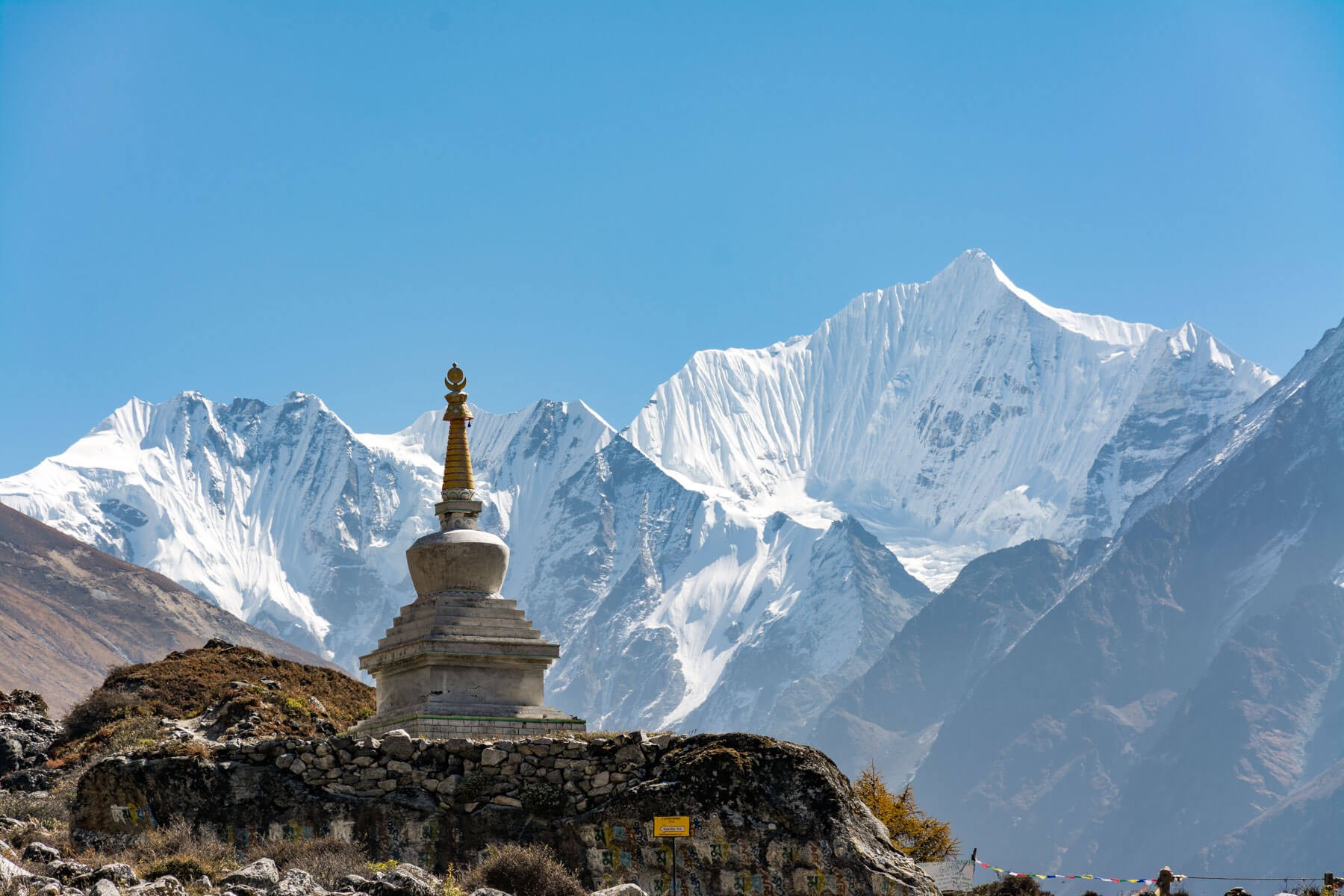
The Langtang Valley Trek starts in Kathmandu, the bustling capital of Nepal, from whence travelers take a picturesque road to Syabrubesi, which serves as the entrance to the Langtang region. Trekkers cross charming Tamang villages, terraced fields with prayer flags hanging from them, and beautiful rhododendron forests as they travel through this adventure.
The scene changes to alpine meadows with yak pastures interspersed as one ascends higher, offering sweeping views of the Himalayan ranges. Gigantic peaks like as Langtang Lirung (7,227m) and Ganesh Himal (7,422m) dominate the skyline, shrouding the valley in a captivating aura. The journey's high point is the expansive vistas from Kyanjin Ri, where the snow-capped peaks mirror the sunrise's golden tones, creating a picture-perfect scene that will be remembered forever.
The chance to fully immerse oneself in the distinct cultures of the Tamang and Sherpa populations is among the most enriching parts of the Langtang Valley Trek. In traditional teahouses, trekkers are greeted with cheerful hospitality and have the opportunity to enjoy real Nepalese food and have animated discussions with the people. A peek at the region's rich cultural tapestry can be found in the lively festivals celebrated along the trail and the rhythmic beats of Tamang music. An oasis for a wide variety of plants and animals is Langtang National Park, a UNESCO World Heritage Site. A variety of bird species, including Nepal's national bird, the colorful Danphe, can be seen on the walk, including elusive species like the Himalayan thar and the endangered red panda.
Although the Langtang Valley Trek is rated as moderately challenging, it comes with its own set of difficulties, such as rough terrain and high altitude. Trekkers can, however, overcome these challenges and enjoy the benefits of reaching their adventure's peak with the right acclimatization and a steady pace. It is recommended that tourists reduce their environmental impact by adhering to the Leave No Trace philosophy, using eco-friendly accommodations, and honoring local customs.
Every second of the journey is filled with amazement and discovery, from the ethereal grandeur of snow-capped peaks to the welcoming warmth of the local people. With wide arms, Langtang Valley invites you to go off on an incredible journey amidst the Himalayan magnificence, whether your goals are adventure, cultural immersion, or just a retreat into nature's embrace.
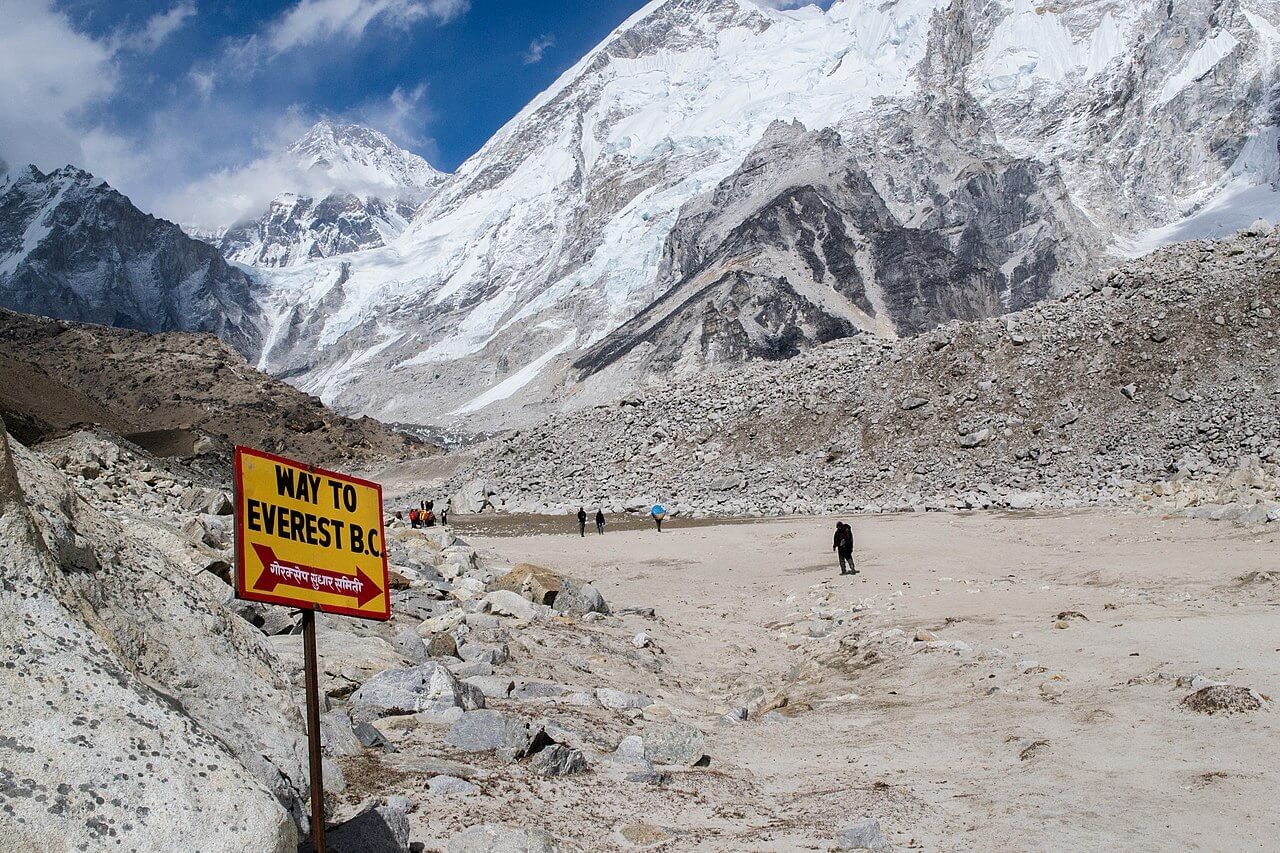
Setting off on the Everest Base Camp climb is like entering a different world where time stands still and each step is filled with excitement and awe. Usually, the trip begins in the energetic town of Lukla, which is only reachable from Kathmandu via an exhilarating aircraft. Passengers are treated to amazing sights as the little aircraft makes its way across the Himalayan slopes, setting the mood for the exciting journey ahead.
The journey itself is a captivating tapestry of scenery, ranging from verdant rhododendron forests to untamed mountainous regions. Trekkers are captivated by the untainted beauty of the Himalayas, which offers a fresh view every day. With old monasteries clinging to sheer cliff faces and vibrant prayer flags waving in the breeze, the charming Sherpa communities along the trail provide a window into traditional mountain life.
Without a doubt, the Everest Base Camp Trek journey is not for the weak of the heart. Trekkers push their bodies and minds to the maximum as they negotiate rocky trails, high elevations, and steep inclines. It is important to carefully acclimate and ascend to higher heights gradually to avoid altitude sickness, which can be a serious difficulty. However, every challenge can be overcome with tenacity and dedication, increasing one's sense of achievement as one gets closer to their final objective.
Beyond its breathtaking scenery, the Everest region has a rich cultural heritage. The hardy Sherpas, who are well-known for their friendliness and skill as mountaineers, are accessible to trekkers. A glimpse into the spiritual fabric of the Himalayas, where Buddhist traditions coexist peacefully with the untamed environment, can be gained by visits to historic monasteries like Tengboche and Pangboche.
Trekkers finally get to see Everest Base Camp after days of breathtaking travel through breathtaking scenery. Situated amidst glacial moraines, the camp functions as a staging area for climbers getting ready to summit the highest peak on Earth. Trekking to Everest Base Camp is a voyage of self-discovery and transformation, not merely a physical accomplishment. Trekkers discover a newfound respect for the resiliency of the human spirit and the splendor of the natural environment when they push the boundaries and overcome obstacles. With each passing day, friendships are forged, memories are made, and a deep connection to the Himalayas is formed—a connection that lingers long after the journey has ended.
Every second of the trip is filled with amazement and excitement, from the colorful streets of Kathmandu to the rough paths of the Khumbu Valley. Trekkers leave this adventure with a renewed sense of purpose, inspired by the power of the mountains and the resiliency of people, whether they are standing at the base of the highest peak in the world or enjoying the warmth of Sherpa hospitality.
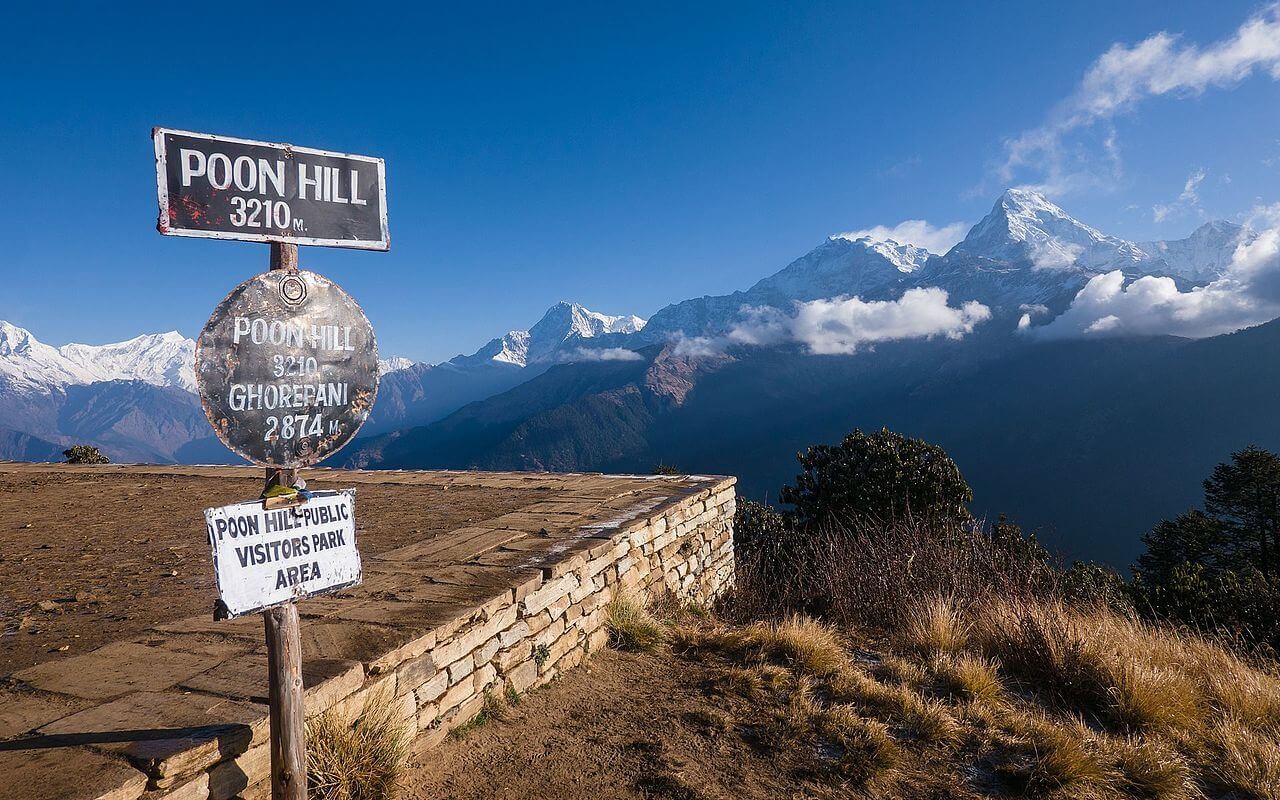
The Ghorepani Poon Hill Trek is a short but incredibly rewarding hiking route that is tucked away in Nepal's Annapurna area. The trail begins in the little town of Nayapul, which is close to Pokhara. It winds through terraced fields decorated with seasonal crops, attractive Gurung and Magar villages, and thick woods of rhododendrons. The trek's high point is Poon Hill, a viewpoint with expansive views of the Dhaulagiri and Annapurna mountain ranges, including the well-known Machhapuchhre, or "Fish Tail," peak.
Going on the Ghorepani Poon Hill Trek is like entering a world of breathtaking scenery and cultural discovery. Over four to five days, the journey usually allows trekkers to gradually acclimate while taking in the breathtaking scenery. Friendly locals welcome visitors along the route and provide a taste of the traditional Himalayan way of life with their hearty lunches and quaint teahouses.
Highlights:
- Probably the most memorable part of the hike is the early-morning climb up to Poon Hill. Trekkers are transfixed by the sight of the snow-capped peaks illuminated by the first rays of dawn, casting a golden glow over the whole area.
- Immersion in the rich cultural heritage of the Gurung community is possible in the villages of Ghandruk and Ghorepani. Authentic Nepalese hospitality can be experienced by guests through homestays, sampling local cuisine, and watching traditional dance performances.
- Trekkers experience a plethora of different scenery along the way, ranging from terraced slopes and alpine meadows to lush woods and gushing waterfalls.
Despite the comparatively modest difficulty level of the Ghorepani Poon Hill Trek, proper preparation is necessary to guarantee a safe and enjoyable trip. A backpack, water bottle, trekking poles, and other necessary trekking equipment are recommended purchases for hikers. Sturdy hiking boots and layered apparel for changing weather are also recommended. It is also advised to allow yourself enough time to acclimate, ideally by staying in Pokhara or Kathmandu for one or two days before beginning the journey.
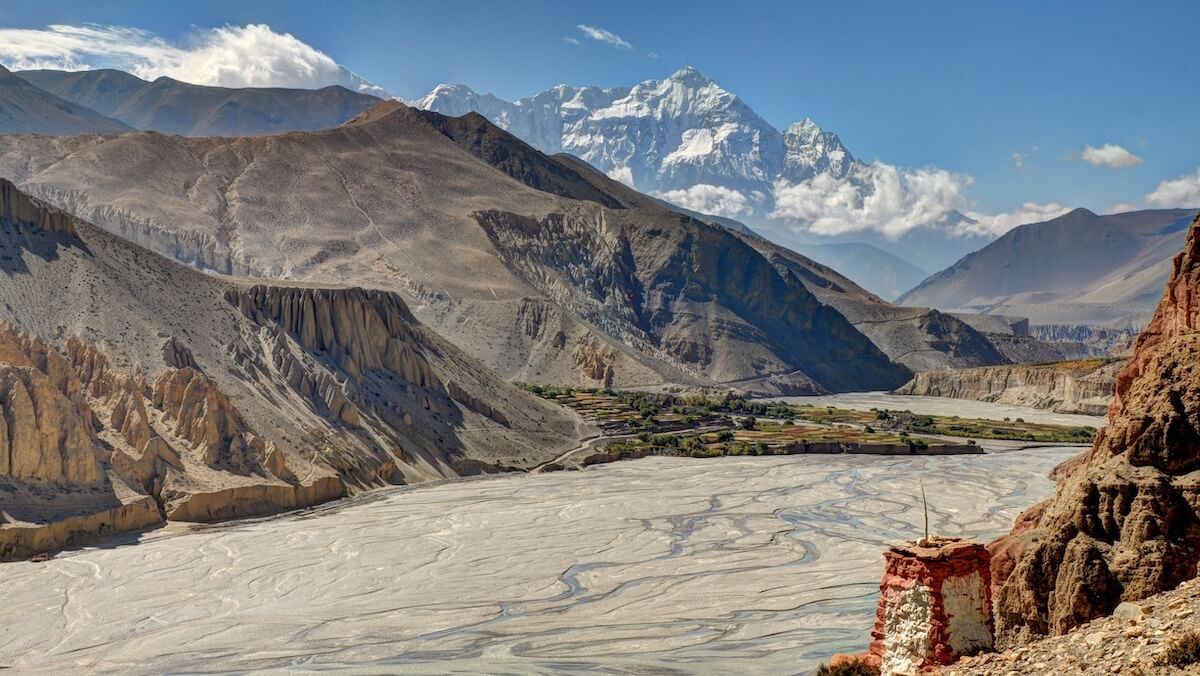
The solitude and remoteness of Upper Dolpo are well known. The area's distinct culture and unspoiled scenery were preserved while it was closed to outsiders until the late 1980s. Hiking in this environment is similar to entering a realm that hasn't been affected by time, where long-standing norms and traditions still apply.
The journey passes through a wide variety of environments, including verdant valleys with crystal-clear rivers and craggy mountain passes with snow-capped summits. The utter magnificence of nature captivates hikers at every bend in the trail, unveiling a fresh vista.
The native inhabitants of Upper Dolpo are known for having spent centuries preserving their Tibetan Buddhist culture. Trekkers get the chance to see historic monasteries, engage with the local villages, and experience long-standing customs as they go across the region. The warmth of the Dolpo people's friendliness is matched by the yak-butter tea they serve, having a deep effect on everyone who travels these trails.
The town of Juphal, which is reachable via a picturesque flight from Nepalgunj, is the usual starting point for the Upper Dolpo trek. Trekkers start their captivating adventure from Juphal and pass through charming villages, terraced fields, and lush pine and juniper forests. The Shey Phoksundo National Park, which is home to the captivating Phoksundo Lake, is one of the trek's highlights. The lake is breathtaking, its deep blue waters striking against the desolate surroundings. The journey also involves traversing high passes, such as Shey La Pass (5,200m) and Kang La Pass (5,151m), which provide expansive views of the neighboring Himalayan peaks, Dhaulagiri and Kanjirowa.
With sightings of elusive species like the snow leopard, blue sheep, musk deer, and Himalayan thar, Shey Phoksundo National Park is also a refuge for wildlife enthusiasts. Due to the park's abundance of birdlife, which includes the vibrant Himalayan Monal, birdwatchers are in for a treat as well.
Key Points:
- Trekking Permits: To get to Upper Dolpo, hikers must obtain special permits from the Nepali government because the region is off-limits. It is best to get these permits through an official trekking agency well in advance.
- Physical Fitness: The strenuous Upper Dolpo hike necessitates a high degree of physical fitness and altitude acclimation.
The spring (March to May) and autumn (September to November) seasons are the ideal times to complete the Upper Dolpo trip because of the clear, blue skies and pleasant weather. Though they take extra preparation for the cold and snow-covered trails, winter treks are feasible.

Image Source: Indrajit Das
With a towering height of 8,586 meters (28,169 feet), the Kanchenjunga massif divides the Indian state of Sikkim from Nepal. The mountain, which is encircled by four subsidiary peaks that are all above 8,000 meters high and are revered by the locals as the "Five Treasures of the Snow," creates an incredibly beautiful vista. Usually requiring 15 to 20 days to complete, the Kanchenjunga Base Camp hike is a demanding but worthwhile adventure. Trekkers experience an unmatched view of the Himalayan region's natural treasures as they go through verdant rhododendron woods, secluded alpine meadows, and high mountain passes.
Route Highlights
- Taplejung to Chirwa: Usually starting in Taplejung, a tiny village in eastern Nepal, the journey continues down the Tamur River valley to Chirwa. In the process, hikers come across quaint settlements home to a variety of ethnic groups, such as the Sherpa, Rai, and Limbu people.
- Chirwa to Ghunsa: The trail leads from Chirwa to the charming settlement of Ghunsa, where it progressively climbs through verdant meadows and thick woodlands. At 3,475 meters (11,398 feet) above sea level, this isolated town offers an insight into the customs of the nearby Tibetan-influenced community.
- Ghunsa to Kanchenjunga Base Camp: Ascending further, hikers encounter alpine scenery characterized by soaring peaks and tumbling waterfalls. The trail winds through steep terrain and glacial moraines before reaching Kanchenjunga Base Camp, which offers sweeping views of the peak.
The chance to engage with native communities along the way is one of the trek's most rewarding experiences from Kanchenjunga Base Camp. Trekkers are treated with the utmost kindness and have the opportunity to discover the distinctive rituals, customs, and religious practices of the community. Although there is no better place to hike in terms of natural beauty, there are significant problems to be aware of. It is necessary to be physically fit, properly acclimated, and adequately prepared due to the high altitude, rough terrain, and unpredictable weather.
Traveling responsibly is crucial, just like on any trekking trip in the Himalayas. By adhering to the Leave No Trace philosophy, honoring regional traditions, and funding sustainable projects that assist local populations as well as conservation efforts, hikers can reduce their negative environmental effects. An immersive experience that honors the rich tapestry of nature, culture, and adventure in the Himalayas, the Kanchenjunga Base Camp trek is more than just a trip to a distant alpine destination. With its breathtaking peaks and wild landscape, Kanchenjunga attracts those looking for a genuine and life-changing trekking experience. It invites explorers to set out on an adventure of a lifetime.

Image Source: Bijay Chaurasia
Upper Mustang, off-limits until 1992, has a certain allure. This remote community is a treasure trove of natural beauties and cultural history, hidden between the massive peaks of the Annapurna and Dhaulagiri ranges. Adventurers traveling to Upper Mustang will encounter a landscape of bare cliffs, windswept plateaus, and deep gorges that provide a dramatic yet enthralling backdrop for the voyage.
Lo Manthang, the historic capital of the former Kingdom of Lo, is the starting point of the Upper Mustang trip. Entering Lo Manthang is like traveling through time, with its cobblestone streets meandering past whitewashed mud-brick dwellings festooned with vibrant prayer flags. The majestic Royal Palace, which stands as a tribute to the area's rich history and royal ancestry, is the crown jewel of Lo Manthang.
Tibetans make up the majority of the population of Upper Mustang, and they have long maintained their distinctive culture and customs. Tibetan Buddhism is deeply ingrained in this area, as shown by the many monasteries, prayer wheels, and chortens that dot the landscape. Trekking in Upper Mustang offers a unique chance to see traditional ceremonies and celebrations, giving you a glimpse into a way of life unaffected by modernization.
With its rough terrain and high mountain passes, the hike to Upper Mustang is not for the faint of heart. Nevertheless, the benefits greatly exceed the difficulties, as every step unveils magnificent landscapes and undiscovered treasures that are just waiting to be found. Trekkers will see a variety of environments on their route, including barren deserts, towering mountains, verdant valleys, and barley fields.
Crossing the fabled Kali Gandaki Gorge, the world's deepest canyon is one of the highlights of the Upper Mustang expedition. This striking scenery, sculpted over millions of years by the powerful Kali Gandaki River, is proof of the unadulterated force of nature. Walking by the gorge provides unmatched vistas of the surrounding hills, which contrast sharply with the azure sky. These summits include Nilgiri and Dhaulagiri.
As the Upper Mustang is a restricted area that requires special licenses from the Nepalese government, it is imperative to secure the proper permits before beginning the journey. Furthermore, because of the difficult terrain and high altitude, trekking in the Upper Mustang calls for a specific level of stamina and fitness.
Spring (March to May) and fall (September to November) offer ideal conditions for hiking the Upper Mustang Trail with clear skies and pleasant weather. This is the time of year when the area is alive with color, with abundant views of the mountains and wildflowers blooming all over the countryside.

Image Source: Vyacheslav Argenberg
The Gokyo Ri Trek usually begins with a picturesque flight from Kathmandu to Lukla, a little airport nestled in the foothills of the Himalayas. Trekkers start their journey from Lukla and follow a gorgeous trail that passes through quaint Sherpa settlements, verdant rhododendron woods, and harsh mountain scenery. Traveling to Gokyo is an experience that aims to fully immerse the traveler in the region's natural beauty and rich cultural heritage.
Certainly, the array of emerald lakes that dot the countryside is one of the highlights of the Gokyo Lake Trek. Situated amidst towering peaks, such as Cho Oyu, the sixth highest mountain in the world, is the primary attraction, Gokyo Cho, the largest lake in the area. Trekkers are in awe of the breathtaking sight that the lake's turquoise waters create as they reflect the surrounding mountains.
Gokyo Ri's ascent is a must-do side trip for anyone looking for a challenge and an aerial view of the Himalayas. Reaching 5,357 meters (17,575 feet) in elevation, Gokyo Ri provides expansive views of Makalu, Everest, Lhotse, and numerous more peaks that make up the recognizable Himalayan landscape. Witnessing the breathtaking sunrise from the peak is an experience that will never fade from memory.
Trekkers get the chance to engage with the local Sherpa communities along the way and discover more about their distinctive way of life. Trekking is made more immersive by the region's rich cultural diversity, which ranges from historic stone homes with prayer flags hanging over them to venerable monasteries steeped in spirituality. Every guest is made to feel valued and welcomed by the Sherpa people's warmth and friendliness.
The best seasons to complete the Everest Gokyo Ri Trek are spring (March to May) and fall (September to November) when the weather is generally stable and bright skies provide unhindered vistas of the mountains. The pathways are especially attractive during these months because of the colorful flora that thrives there.
Key Points:
- Acclimatization: To prevent illnesses linked to high altitude, proper acclimatization is essential. It is advised to stay for a few days at Namche Bazaar and other intermediary locations to give the body time to acclimate to the higher altitude.
- Bring along all the necessary equipment for walking, such as a first aid kit, warm clothes, a sleeping bag, and strong hiking boots. To make the hike easier, it's also a good idea to pack lightly.
- To ensure that you keep hydrated and have enough energy throughout the walk, make sure you consume enough water and eat frequent meals.
- Remember to always obtain permission before taking pictures of individuals or places of worship to respect local customs and traditions.
Planning your trip to Nepal with Mount Mania ensures an unforgettable adventure. From the majestic peaks of the Himalayas to the rich cultural tapestry of Nepalese life, we offer expertly curated experiences tailored to your preferences. Our professional guides, comprehensive itineraries, and commitment to safety and comfort make exploring Nepal's natural and cultural wonders seamless and enjoyable.

.jpeg)










